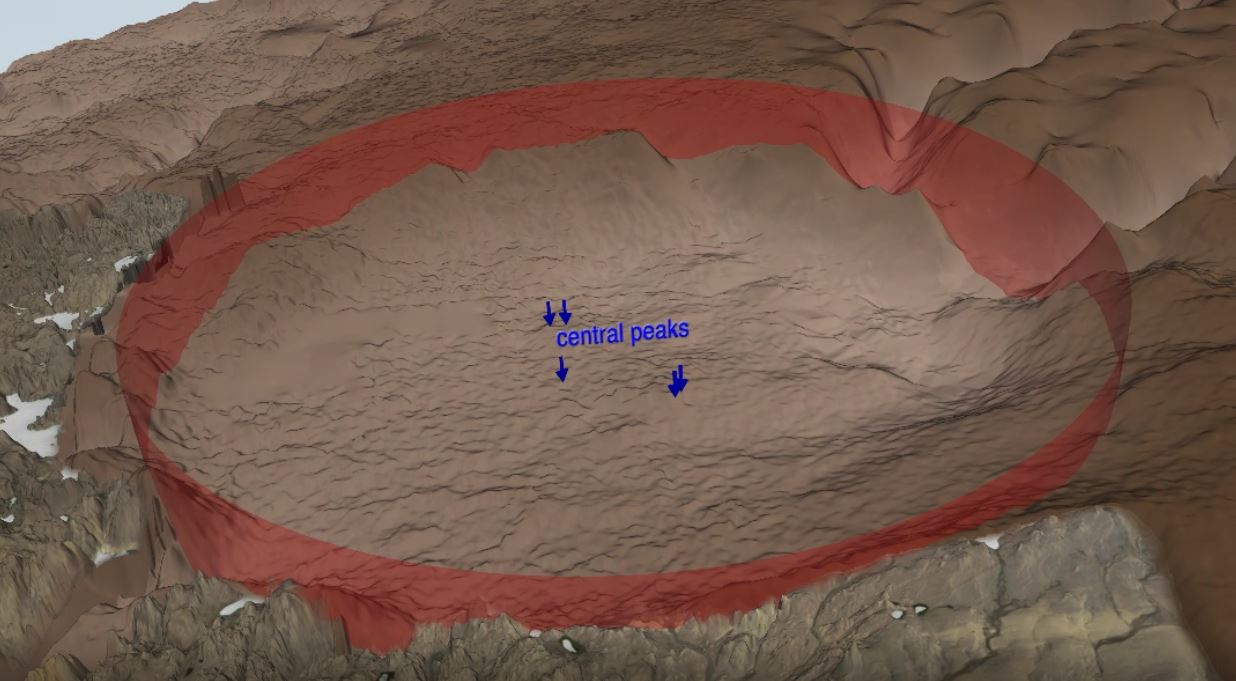As most crater heads know, a “central peak” within a bowl shaped depression is diagnostic of a large “complex crater” resulting from a highly energetic (to say the very least) cosmic collision. Though NASA made an effort to point out the subtle peak features of Hiawatha Crater beneath a mile of erosive ice, the portion of their video revealing this crucial aspect of the crater was less than satisfying. Hard to get everything in a single clip I suppose.
So I was thrilled to see crater team member Anders Bjork share a link to the crater’s 3d model data in a tweet. With the data, the curious could investigate the crater for themselves and literally ‘fiddle’ with it. Fortunately, the 3d Model Viewer that is included on a Windows 10 machine, combined with a good graphics card, can swallow the .STL file and process the beast – given a little time. Try it yourself.
What you will see is a humble but distinct collection of uplifted material — from the rebound of molten rock within the cosmic wound. Astonishing that anything at all is still visible after ~12,874 years given the bulldozing effect of glacial ice on topography. And far more unlikely still if the crater were much older.
Wow.
Do you want your own little piece of the worlds natural history?
Here is a 3D print file of the newly discovered Hiawatha Crater in Greenland: https://t.co/VHjBlHShxcFor scale, the big hole in the middle is 31 km wide!
… read the paper here: https://t.co/bMSFjc7MPH pic.twitter.com/sTC6LgDmFv— Anders Anker Bjørk (@aabjoerk) November 19, 2018
Screenshot from the NASA video here:



